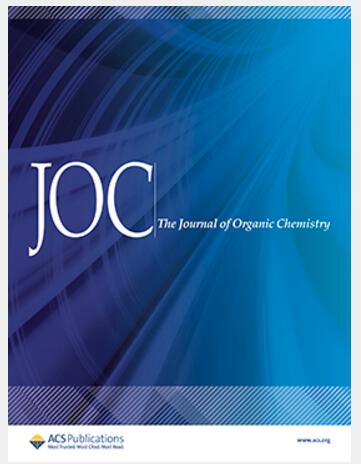芳酰肼与芳基醛的一锅三组分偶联以获得三芳基甲烷支架。
IF 3.3
2区 化学
Q1 CHEMISTRY, ORGANIC
引用次数: 0
摘要
本文报道了芳基肼HCl盐与芳基醛的一锅三组分偶联,合成了三芳基甲烷支架。该反应在简单、温和和实用的条件下进行,不需要额外的苯甲酸或刘易斯酸添加剂,适用于广泛的底物范围,收率很高。此外,这种方法可以扩大规模,并允许获得各种各样的三芳基甲烷衍生物。机理研究表明,原位形成的腙中间体对该转化的高效率和选择性至关重要。本文章由计算机程序翻译,如有差异,请以英文原文为准。
One-Pot Three-Component Coupling of Arylhydrazines with Aryl Aldehydes to Access the Triarylmethane Scaffold.
We herein report a one-pot, three-component coupling of arylhydrazine HCl salts with aryl aldehydes to synthesize a triarylmethane scaffold. This reaction proceeds under simple, mild, and practical conditions without the need for an additional Bro̷nsted or Lewis acid additive, accommodating a broad substrate scope with good to excellent yields. Furthermore, this methodology can be scaled up and allows access to a diverse range of triarylmethane derivatives. Mechanistic studies suggest that the in situ formed hydrazone intermediate is essential for the high efficiency and selectivity of this transformation.
求助全文
通过发布文献求助,成功后即可免费获取论文全文。
去求助
来源期刊

Journal of Organic Chemistry
化学-有机化学
CiteScore
6.20
自引率
11.10%
发文量
1467
审稿时长
2 months
期刊介绍:
Journal of Organic Chemistry welcomes original contributions of fundamental research in all branches of the theory and practice of organic chemistry. In selecting manuscripts for publication, the editors place emphasis on the quality and novelty of the work, as well as the breadth of interest to the organic chemistry community.
 求助内容:
求助内容: 应助结果提醒方式:
应助结果提醒方式:


